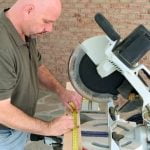Are you wondering, “Can you deduct home improvements on tax return?” Homeowners often seek ways to save money when it comes to maintaining and renovating their properties. One way to potentially offset some of these costs is by taking advantage of home improvement tax deductions. Understanding the basics of deducting home improvements on your tax return can help you maximize your savings and ensure compliance with the necessary regulations.
When it comes to qualifying for a home improvement tax deduction, it’s essential to know what expenses can be included in this category. Renovations that increase the value or improve the functionality of your home may be eligible for deductions. However, not all types of projects qualify, so it’s crucial to understand the criteria set by the Internal Revenue Service (IRS) to ensure that your expenses meet the necessary requirements.
Keeping track of your home improvement costs is crucial for claiming deductions on your tax return accurately. Proper documentation, such as receipts, invoices, and contracts, can help support your claims in case of an audit. It’s essential to maintain organized records throughout the renovation process to make it easier when it comes time to file your taxes. By staying informed and organized, homeowners can benefit from potential tax savings while enhancing their living spaces.
What Qualifies as a Home Improvement for Tax Deductions?
Types of Home Improvements Eligible for Tax Deductions
When it comes to qualifying for tax deductions on home improvements, not all upgrades or renovations will necessarily be eligible. The Internal Revenue Service (IRS) has specific criteria in place to determine what constitutes a home improvement that qualifies for tax deductions. Generally, improvements that add value to your home or prolong its life can be considered eligible for deductions. This includes projects like adding a new roof, installing energy-efficient windows, upgrading HVAC systems, or making structural changes.
Home Repairs vs Home Improvements
It is important to note the distinction between home repairs and home improvements when considering tax deductions. While repairs are necessary fixes to maintain the property’s current condition, improvements typically enhance the property’s value or extend its useful life. Only qualified home improvements
Evidence of Improvement Costs
To claim a deduction for qualified home improvements on your tax return, you’ll need to keep detailed records of all related expenses. This includes receipts, invoices, contracts with contractors, and any other relevant documentation that verifies the costs incurred during the improvement process. Without proper documentation, it may be challenging to substantiate your claims and could result in potential discrepancies during an IRS audit.
How to Keep Track of Home Improvement Costs for Tax Purposes
When it comes to deducting home improvements on your tax return, one crucial aspect to consider is keeping track of all your expenses accurately. By maintaining detailed records and documentation of your home improvement costs, you can ensure that you maximize the potential deductions on your taxes. Here are some tips on how to effectively track home improvement costs for tax purposes:
- Organize receipts and invoices: Keep all receipts and invoices related to your home improvement projects in one place. This includes materials, labor costs, permits, and any other relevant expenses.
- Create a spreadsheet: Use a spreadsheet to list out each expense, including the date, description of the work done, cost breakdown, and any other pertinent information. This will help you stay organized and easily calculate total costs.
- Take photos and document progress: Document the progress of your home improvement projects with photos or videos. This visual evidence can be helpful in justifying the expenses claimed on your tax return.
By diligently tracking your home improvement costs, you can provide accurate information when claiming deductions on your tax return.
Remember that proper record-keeping not only helps in maximizing deductions but also serves as a backup in case of an audit by the IRS. Be sure to consult with a tax professional if you have any questions regarding what expenses can you deduct home improvements on tax return, as they can provide guidance tailored to your specific situation.
Tax Benefits of Deducting Home Improvements
When it comes to home improvement tax deductions, there are various benefits that homeowners can take advantage of to help reduce their tax liability. Understanding these tax benefits is essential for anyone looking to make improvements to their property while also saving money on their taxes. Here are some key tax benefits of deducting home improvements that can help homeowners maximize their savings:
- Increased Property Value: One major benefit of deducting home improvements on your tax return is that it allows you to increase the value of your property. This means that not only do you get to enjoy a better living environment, but you also have the potential to see a higher return on investment if you ever decide to sell your home in the future.
- Energy Efficiency Credits: Certain home improvements, such as installing energy-efficient windows, doors, or appliances, may qualify for federal or state tax credits. These credits can help offset the cost of making energy-saving upgrades to your home while also reducing your taxable income.
- Medical Necessity Deductions: If you make home improvements for medical reasons, such as installing ramps or widening doorways for accessibility purposes, you may be able to deduct a portion of these expenses from your taxes. This can provide financial relief for homeowners who need to make modifications to their homes for health-related reasons.
In addition to these benefits, deducting home improvements on tax returns can you deduct home improvements on tax return also allows homeowners to lower their taxable income and potentially move into a lower tax bracket. This can result in significant savings come tax season and provide an incentive for individuals to invest in improving their homes. Ultimately, taking advantage of these tax benefits can help homeowners save money while creating a more comfortable and valuable living space.
Limitations and Restrictions on Home Improvement Tax Deductions
When considering deducting home improvements on your tax return, it’s crucial to be aware of the limitations and restrictions that come with this tax benefit. While home improvements can indeed provide certain tax advantages, there are specific criteria that must be met in order to qualify for deductions.
Types of Home Improvements Eligible for Tax Deductions
Not all home improvements are eligible for tax deductions. Generally, for a home improvement to qualify for a deduction, it must add value to your property or prolong its useful life. This includes upgrades such as adding a new roof, installing solar panels, renovating a kitchen or bathroom, or making your home more energy-efficient. Cosmetic changes or repairs that do not enhance the value or lifespan of your property typically do not qualify.
Costs That Can Be Deducted
When it comes to deducting home improvements on your tax return, you usually cannot deduct the entire cost upfront. The IRS considers home improvements as capital expenses which can potentially be deducted over time through depreciation. However, certain energy-efficient upgrades might qualify for immediate tax credits under specific programs like the Residential Energy Efficient Property Credit.
Income Limitations and Phase-Outs
It’s essential to note that there are income limitations and phase-outs when it comes to claiming home improvement deductions on your tax return. Depending on your filing status and income level, you may not be eligible for certain deductions or credits related to home improvements. It’s advisable to consult with a tax professional to determine if you meet the requirements based on your financial situation.
How to Claim Home Improvement Deductions on Your Tax Return
When it comes to claiming home improvement deductions on your tax return, there are certain steps you need to follow to ensure you are maximizing your benefits. First and foremost, it is essential to keep detailed records of all expenses related to the home improvements you have made. This includes receipts, invoices, and any other documentation that proves the costs incurred during the renovation or upgrade.
To claim home improvement deductions on your tax return, you will typically need to itemize your deductions rather than taking the standard deduction. This means keeping track of not just your home improvement expenses, but also other deductible expenses such as mortgage interest, property taxes, and charitable contributions. By itemizing your deductions, you can potentially lower your taxable income and reduce the amount of taxes you owe.
One important thing to remember is that not all home improvements are eligible for tax deductions. The IRS has specific guidelines regarding what qualifies as a deductible home improvement expense. Generally speaking, improvements that add value to your home or prolong its life can be considered for deduction.
However, cosmetic improvements or general repairs may not qualify. It’s always a good idea to consult with a tax professional or accountant to ensure you are following the rules and maximizing your deduction potential.
| Home Improvement Expense | Deductible Amount |
|---|---|
| Kitchen Remodel | $10,000 |
| Roof Replacement | $15,000 |
| New Energy-Efficient Windows | $5,000 |
Common Misconceptions About Deducting Home Improvements
When it comes to deducting home improvements on your tax return, there are several common misconceptions that many homeowners fall prey to. One of the biggest misunderstandings is that any money spent on improving your home can be deducted from your taxes. However, the reality is that only specific types of home improvements qualify for tax deductions. Understanding what qualifies as a deductible home improvement is crucial to avoid missteps when filing your taxes.
Another misconception is that you can deduct the full amount spent on home improvements in one go. In most cases, the cost of home improvements must be spread out over several years through depreciation deductions.
This means that while you may not see an immediate reduction in your taxable income, you can benefit from deductions over time. Keeping detailed records of all home improvement costs and understanding how depreciation works can help you maximize your tax benefits in the long run.
Lastly, some homeowners mistakenly believe that making expensive upgrades to their homes automatically translates into larger tax deductions. While certain energy-efficient improvements or modifications for medical purposes can result in significant tax benefits, not all renovation projects will lead to substantial deductions on your tax return.
It’s essential to research and consult with a tax professional to determine which home improvements can you deduct on your tax return, and how much of a deduction you may be eligible for based on IRS guidelines.
| Common Misconceptions | Correct Information |
|---|---|
| All home improvement expenses are deductible | Only specific types of improvements qualify for deductions |
| You can deduct the full amount at once | Costs are usually depreciated over time for deductions |
| Expensive upgrades always lead to large deductions | The type of improvement determines the deduction amount |
Case Studies
One common question that homeowners often ask is, “Can you deduct home improvements on tax returns?” The answer is yes, under certain circumstances. To understand how this works in practice, it can be helpful to look at some real-life examples of homeowners who have successfully taken advantage of home improvement tax deductions.
In one case study, a homeowner decided to install solar panels on their property to make their home more energy-efficient. This not only reduced their electricity bills but also made them eligible for a federal tax credit for renewable energy systems. By keeping track of the costs associated with the installation of solar panels and other energy-saving upgrades, the homeowner was able to claim these expenses as a tax deduction, ultimately resulting in substantial savings.
Another example involves a homeowner who renovated their kitchen to increase the value of their property. While kitchen renovations are generally not deductible as a home improvement expense, this homeowner decided to incorporate energy-efficient appliances and materials into the project. As a result, they were able to qualify for certain tax credits and deductions related to energy efficiency, allowing them to recoup some of the costs incurred during the renovation process.
Tips for Maximizing Home Improvement Tax Deductions
When it comes to maximizing home improvement tax deductions, keeping meticulous records is key. Make sure to save all receipts, invoices, and contracts related to your home improvement projects. This documentation not only helps you accurately track your expenses but also serves as evidence in case the IRS requests proof of your deductions. Additionally, consider creating a designated folder or digital file to store all relevant documents for easy access when it’s time to file your taxes.
Another tip for maximizing home improvement tax deductions is to be aware of any energy-efficient upgrades that may qualify for additional tax benefits. The federal government offers various tax credits for eco-friendly improvements like solar panels, energy-efficient windows, and HVAC systems. By taking advantage of these incentives, you can not only save money on your utility bills but also reduce your tax liability at the same time.
Furthermore, consulting with a tax professional or accountant can help you navigate the complex rules and regulations surrounding home improvement deductions. They can provide valuable advice on how to optimize your deductions based on your specific circumstances and ensure that you are fully compliant with current tax laws. Investing in expert guidance can ultimately result in significant savings on your tax return while minimizing the risk of any costly mistakes or audits related to deducting home improvements.
Conclusion
In conclusion, the ability to deduct home improvements on your tax return can be a valuable opportunity to save money and maximize your tax benefits. Understanding what qualifies as a home improvement for tax deductions, keeping track of costs, and knowing the limitations and restrictions are crucial steps in ensuring you benefit from this tax-saving strategy.
By maintaining detailed records of your home improvement expenses and following the guidelines set by the IRS, you can potentially lower your taxable income and reduce the amount of taxes you owe. While there are specific rules to follow when claiming home improvement deductions on your tax return, with proper documentation and adherence to regulations, you can successfully take advantage of this financial opportunity.
As illustrated in real-life case studies of homeowners who have successfully deducted home improvements on their tax returns, it is clear that with careful planning and organization, this strategy can result in significant savings. By staying informed about common misconceptions regarding deducting home improvements and implementing tips for maximizing these deductions, you can ensure that you benefit from this tax-saving opportunity when filing your annual taxes.
Frequently Asked Questions
What Home Improvements Are Tax Deductible IRS?
Home improvements that are tax deductible according to the IRS typically fall under the category of energy efficiency upgrades. This may include installing solar panels, energy-efficient windows, doors, or heating systems. It’s important to keep detailed records and receipts for these improvements.
What Capital Improvements Are Tax Deductible?
Capital improvements that are tax deductible usually involve significant upgrades that increase the value or extend the life of your property. This can include remodeling a kitchen or bathroom, adding a room, or making structural enhancements. These expenses can sometimes be added to the cost basis of your home for future tax benefits.
What Is Tax Deductible for Homeowners?
Tax deductions for homeowners can include mortgage interest, property taxes, and certain home office expenses if you meet specific criteria. Additionally, expenses related to selling a home, such as real estate agent fees or repairs done to make the house more marketable, may also be tax deductible. Always consult with a tax professional for personalized advice.

I’m thrilled to have you here as a part of the Remodeling Top community. This is where my journey as an architect and remodeling enthusiast intersects with your passion for transforming houses into dream homes.





